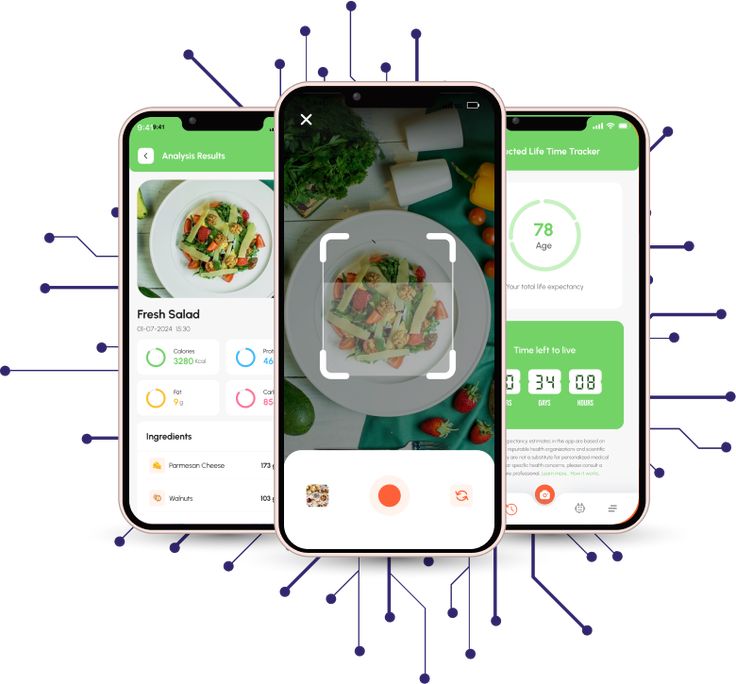How to Track Calories to Lose Weight Fast
Introduction
Counting calories is one of the most effective ways to lose weight—and yet, many people struggle with it or give up early. The truth is, tracking calories doesn’t have to be complicated or tedious. When done right, it’s a powerful tool that helps you create a calorie deficit, burn fat faster, and build sustainable habits.
In this blog, we’ll guide you through how to track calories properly, common mistakes to avoid, and the best tools to simplify your journey toward fast, healthy weight loss.
Table of Contents
- Why Tracking Calories Works
- How Many Calories Should You Eat to Lose Weight?
- Step-by-Step Guide to Tracking Calories
- Tips for Accurate Calorie Tracking
- Common Pitfalls & How to Avoid Them
- Using Technology to Simplify Calorie Counting
What makes Diet Plan Work?
This plan combines low-calorie, nutrient-dense foods with high protein and fiber to help:
- Tracking calories helps you:
- Understand your eating habits
- Identify hidden calories in foods & drinks
- Control portion sizes
- Stay accountable to your goals
Why Tracking Calories Works?
Weight loss boils down to a simple equation:
Calories In < Calories Out = Fat Loss
- Breakfast (under 350 calories)
- Lunch (under 400–450 calories)
- Dinner (around 400–500 calories)
- 2 snacks (100–150 calories each)
Studies consistently show that people who track calories lose significantly more weight than those who don’t.
How Many Calories Should You Eat to Lose Weight?
Your daily calorie target depends on factors like:
- Age
- Gender
- Weight
- Activity level
- Metabolic rate
A general rule of thumb:
To lose 1 pound (~0.45 kg) per week, create a deficit of about 500 calories per day.
Example:
If your maintenance calories are 2,000/day, aim for ~1,500/day to lose weight steadily.
Step-by-Step Guide to Tracking Calories
Step 1: Calculate Your Daily Calorie Needs
Use an online calculator or consult a nutritionist to find your Total Daily Energy Expenditure (TDEE).
Step 2: Choose a Calorie Tracking Method
Apps like DietPulse, MyFitnessPal, LoseIt
Food diaries or spreadsheets
Step 3: Log Everything You Eat & Drink
Include meals, snacks, beverages, sauces, and even cooking oils. Small extras add up!
Step 4: Measure Portions Accurately
Use a kitchen scale or measuring cups for precision.
Step 5: Monitor & Adjust Weekly
Track your weight and energy levels. If not losing, adjust calories slightly.
Tips for Accurate Calorie Tracking
- Be honest and consistent
- Weigh food whenever possible
- Account for cooking methods (oil, butter)
- Don’t forget liquids and condiments
- Track in real time or at least daily
- Focus on whole, nutrient-dense foods for better satiety
Common Pitfalls & How to Avoid Them
- Underestimating portion sizes,
- Use a scale, not just eyeballing
- Forgetting snacks or drinks
- Log immediately after consuming
- Relying on generic food entries
- Use verified database entries or scan barcodes
- Getting discouraged by slow progress Stay patient and consistent
- Only tracking calories, ignoring nutrition
- Prioritize protein, fiber, and healthy fats
Using Technology to Simplify Calorie Counting
Apps can:
- Auto-calculate calories and macros
- Suggest meals based on your calorie budget
- Sync with fitness trackers for activity-based adjustments
- Send reminders and progress reports
DietPulse offers an all-in-one platform tailored for personalized calorie tracking, meal planning, and progress monitoring—making it easier to lose weight fast and sustainably.
Conclusion
Tracking calories is a powerful, proven strategy for fast weight loss—when done with accuracy and consistency. With the right tools and mindset, you can take control of your eating habits, create a calorie deficit, and watch the fat melt away.
Ready to start tracking smarter?
Download DietPulse today and get personalized calorie goals, meal suggestions, and daily tracking to reach your weight loss goals faster.




